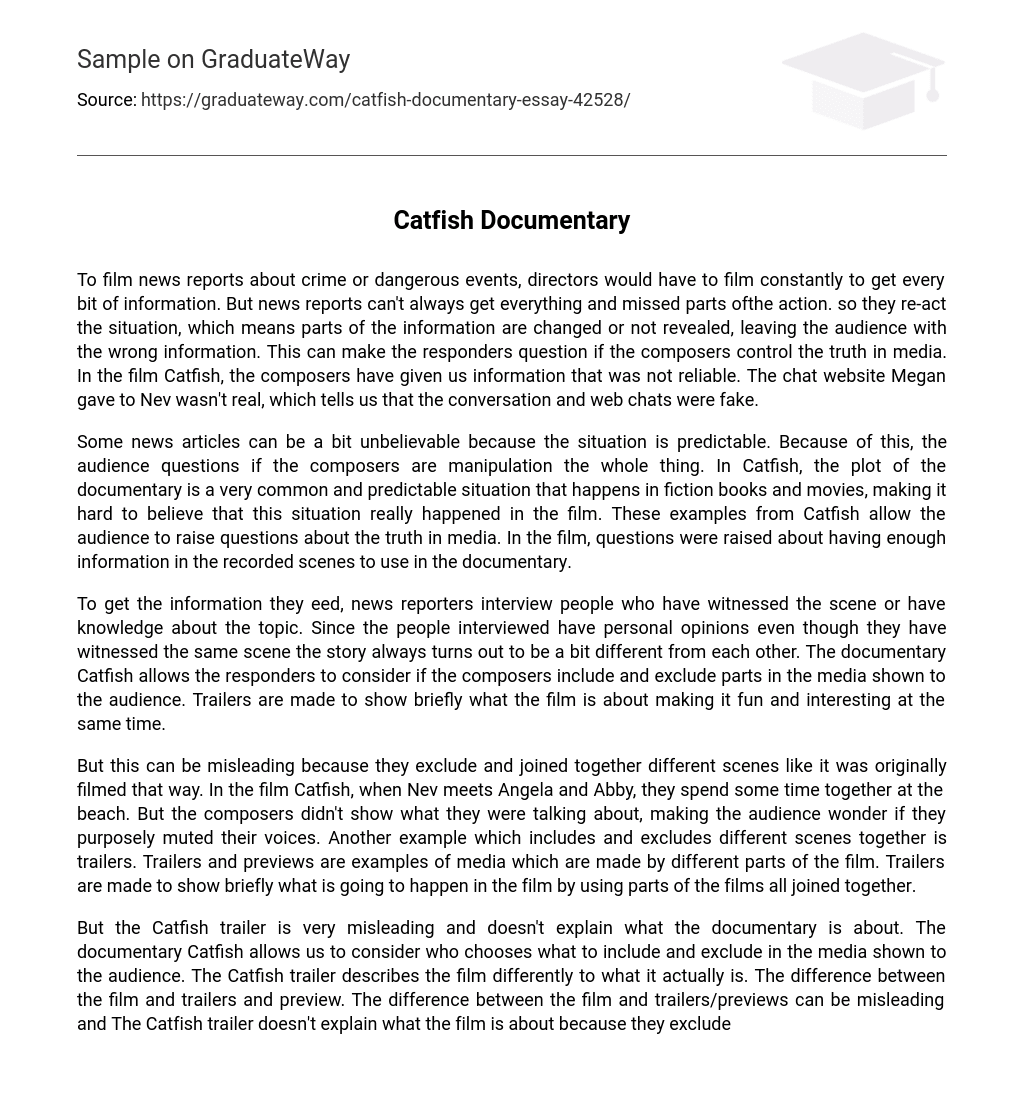Directors filming news reports on crime or dangerous events would need to continuously film to capture every detail. However, it is not always possible for news reports to capture all the information and some parts are missed. Therefore, they recreate the situation, resulting in altered or undisclosed information, which can mislead the audience. This raises doubts about whether composers manipulate the truth in media. In the movie Catfish, the composers presented unreliable information. The chat website Megan provided to Nev was fictional, indicating that the conversations and web chats were fabricated.
Some news articles can seem unbelievable as the situations they depict are often predictable. As a result, the audience may question whether the creators are manipulating the entire story. Catfish, a documentary, presents a plot that is very typical and expected, often seen in fictional books and movies. This makes it difficult to believe that the events truly occurred in the film. These instances from Catfish prompt the audience to ponder about the authenticity of media. The film itself raises doubts about the adequacy of information available in the recorded scenes for use in a documentary.
News reporters gather information by interviewing individuals who have witnessed or have knowledge about a specific event or topic. However, due to personal opinions and perspectives, the stories conveyed by these witnesses often vary. The documentary Catfish prompts viewers to contemplate whether the media presented by the creators includes or omits certain elements. Trailers serve as a concise and captivating preview of a film, offering a mix of enjoyment and intrigue.
However, it can be misleading because it combines and omits various scenes as if they were originally filmed in that way. In the movie “Catfish,” for instance, when Nev meets Angela and Abby, they spend time together at the beach. However, the filmmakers chose not to show what they were talking about, leaving the audience questioning whether their voices were intentionally muted. Trailers are another example of combining and excluding different scenes. They are created by different parts of the film and serve to provide a brief glimpse of what will happen in the movie by seamlessly joining different parts of the film together.
However, the Catfish trailer is deceptive and fails to accurately depict the documentary. The documentary itself prompts us to question who controls the content presented to the audience. The Catfish trailer presents a different narrative compared to the actual film. This disparity between the film and its trailers and previews can lead to misunderstandings. The Catfish trailer neglects to provide an accurate description of the film, as it purposely combines and omits scenes to create a false impression. One must wonder how they determine what information is necessary.
How do filmmakers determine the timing of their shots to capture the necessary information? Who do they approach, and who do they exclude, in order to gather the required data? If the documentary were to present every single detail without editing or excluding unimportant parts, the resulting film would become excessively long, and the audience might become bored and lose interest. Consequently, even though the individuals interviewed have all witnessed the same events, their personal opinions cause the narrative to differ slightly between them. Movies exhibit the desired perspective of their creators; they evoke the same emotions experienced by those involved. These films often depict virtuous characters in a positive light and paint negative portrayals of villains. The creators possess control over the situation, and news reporters may distort stories to make them more captivating for their viewers.





